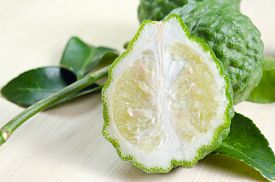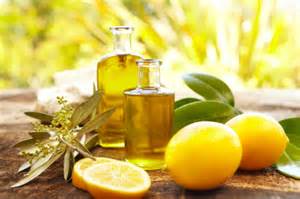









Quality and Purity - AromaProfiles
It used to be the case that you could be pretty sure where a particular species of plant was grown and from where the essential oil came - lavender used to come from either England or France, for example, Lavender still comes from England and France but now it also comes from China, form where it is sometimes shipped to France - and re-exported as 'French.
It used to be the case that French Lavender was grown under clear skies, fresh and clean. Now you can see lavender growing in fields adjacent to motorways, under skies thick with the smoke rising from nuclear plants.
It now makes a great deal of difference from where, exactly, in France the lavender comes - the high Alps are preferred partly because the air is cleaner there . For an Aromatherapist it is important to know whether a Helichrysum, for example, is grown in Corsica or the former Yugoslavia, because the two essential oils have different therapeutic qualities.
It used to be the case that some essential oils were sold at auction. Nowadays, wholesalers tend to have a more direct access to the source - the field in which the crop is grown , and the farmer - often through a middleman. This gives purchasers more control, which is necessary, because there are more factors to consider.
Aside from the question of which country, and exactly from where in that country the oils come, aromatherapists who use essential oils for clinical use want to know which, if any, chemical pesticide, fungicide or herbicide is used on the crop. Bear in mind here that we are talking about tiny quantities of biocide residues.
These things also exist - in very much large quantities - in the foods we eat every day. Plagued as they are by insects, insect eggs, snails, rodents, weeds and fungi, farmers are tempted to use chemicals (known as 'biocides'), and it is the job of the middleman or direct buyer to make sure they're not. Just how much biocide residue is left in any particular essential oil depends on the integrity of the line of supply.
For serious aromatherapists, this is the thing they look for when choosing essential oils. The various aromatherapy oil trade organizations recognize the public's desire for purity and as the acceptance of biocides grow less, growers are responding by trying to cut down on them, or omit them altogether.
Essential oils are tested by gas chromatography, mass-spectroscopy. thin layer chromatography and high performance liquid chromatography, which are methods of separating essential oils (and other things) (GC) is basically a hollow column which is lined inside with a chemical resin.
A tiny amount of essential oil is diluted with a solvent and injected into one end of the column and then gas - hydrogen or helium - is forced through the column , under constant pressure, forcing the components of the essential oil to stick to the sides. The most sophisticated machines have columns which are just 0.25mm in diameter and 100 metres long.
A detector at the other end identifies each component as it releases from the resin and comes to the other end of the column, the most volatile being evaporated first. The column is heated, releasing more components, which are likewise registered, one after the other.
As they arrive at the detector, the components are burned, which causes electrical activity, which is recorded as a series of peaks on a piece of paper. The unique pattern of the peaks, showing the relative positions of the components, creates a 'fingerprint' of the oil.
Reference: The Fragrant Mind: Valerie Ann Worwood
- Home
- Addiction
- JASMINE- Floral - Jasminum Officinale,J. grandiflorum, J.sambac
- History of Drugs-4
- History of Drugs
- History of Drugs-3
- The Somatid Connection
- Rosemary-Personality-Profile
- Personality In Perfumery
- Personality Tests
- The Water Connection
- Cinnamon - Personality profile
- Mind-Mood-Emotion-Quick Reference Chart - S - Un
- History of Drugs-5
- Mind-Mood-Emotion-Quick Reference Chart - Un - W
- Emotional-Healing Problems-A-B-Positive and Negative Mood Charts
- Emotional-Healing Problems-B-H-Positive and Negative Mood Charts
- How Essential Oils Work On the Brain
- Cardamom Personality Profile
- Essential Oils Used For Emotional Healing-A-M
- Lavender- Floral/Herbie
- Positive Mind, Mood & Emotion - Alertness
- Juniper personality profile
- JASMINE- Floral - Jasminum Officinale,J. grandiflorum, J.sambac
- HYACINTH - Floral - Hyacinthus Orientalis
- Emotional Healing Introduction - 2
- Emotional Healing Introduction
- Memory Enhancement, Mental Clarity and Efficiency
- How To Get Through Life In One Piece
- HELICHRYSUM (Immortelle or Italian Everlasting)
- GRAPEFRUIT - Fruitie - Citrus paradisi
- The Art Of Smelling - Which Method - Aromaprofiles
- The Art Of Smelling
- GINGER PERSONALITY PROFILE
- Geranium - Pelargonium graveolens Personality Profile
- Frankincense Resinie - Boswellia Carteri
- Quality and Purity - 2 - AromaProfiles
- Quality and Purity - AromaProfiles
- ChemoTypes - AromaProfiles
- Adaptogens - AromaProfiles


